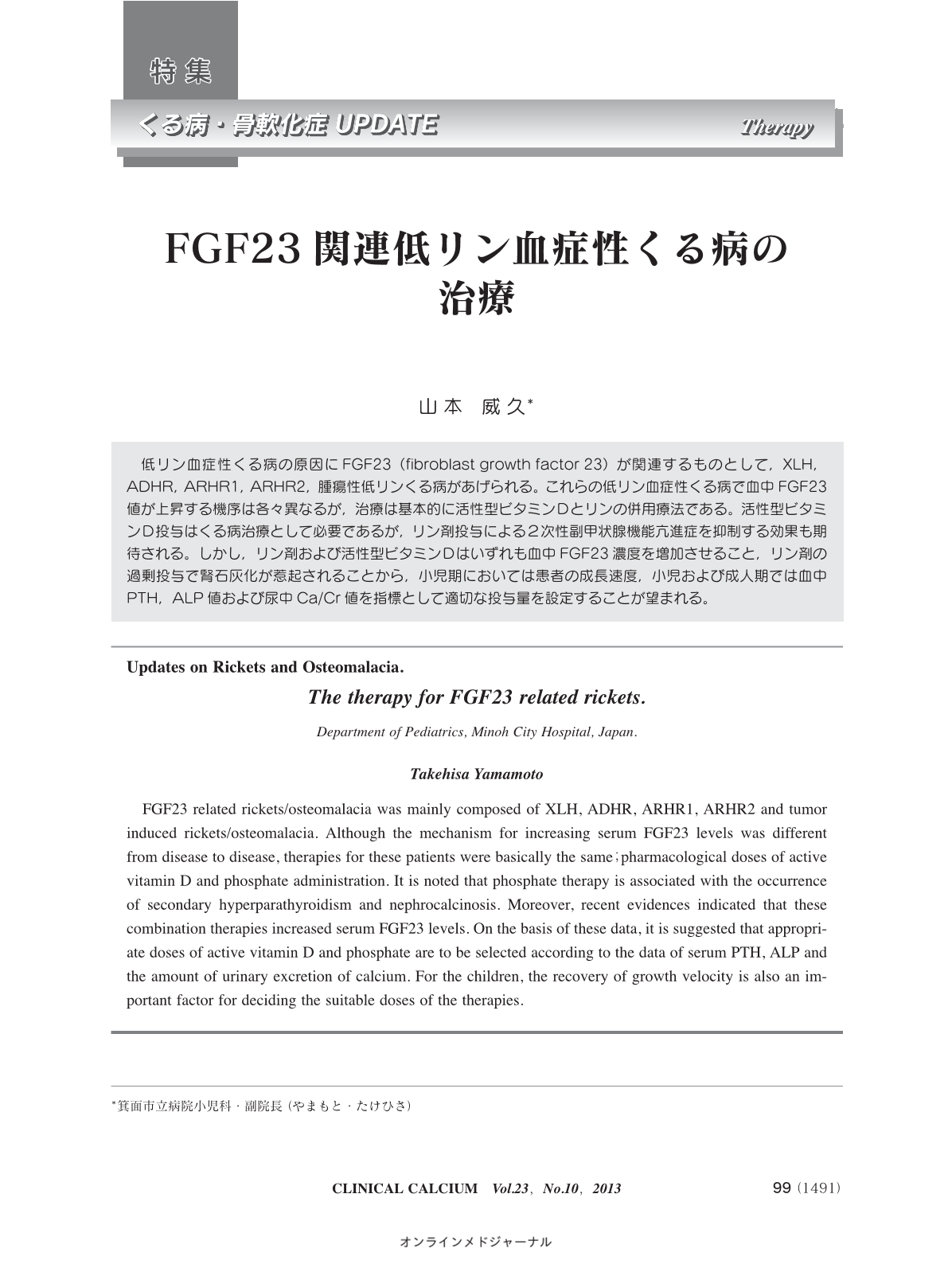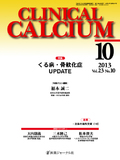Japanese
English
- 有料閲覧
- Abstract 文献概要
- 1ページ目 Look Inside
- 参考文献 Reference
低リン血症性くる病の原因にFGF23(fibroblast growth factor 23)が関連するものとして,XLH,ADHR,ARHR1,ARHR2,腫瘍性低リンくる病があげられる。これらの低リン血症性くる病で血中FGF23値が上昇する機序は各々異なるが,治療は基本的に活性型ビタミンDとリンの併用療法である。活性型ビタミンD投与はくる病治療として必要であるが,リン剤投与による2次性副甲状腺機能亢進症を抑制する効果も期待される。しかし,リン剤および活性型ビタミンDはいずれも血中FGF23濃度を増加させること,リン剤の過剰投与で腎石灰化が惹起されることから,小児期においては患者の成長速度,小児および成人期では血中PTH,ALP値および尿中Ca/Cr値を指標として適切な投与量を設定することが望まれる。
FGF23 related rickets/osteomalacia was mainly composed of XLH, ADHR, ARHR1, ARHR2 and tumor induced rickets/osteomalacia. Although the mechanism for increasing serum FGF23 levels was different from disease to disease, therapies for these patients were basically the same;pharmacological doses of active vitamin D and phosphate administration. It is noted that phosphate therapy is associated with the occurrence of secondary hyperparathyroidism and nephrocalcinosis. Moreover, recent evidences indicated that these combination therapies increased serum FGF23 levels. On the basis of these data, it is suggested that appropriate doses of active vitamin D and phosphate are to be selected according to the data of serum PTH, ALP and the amount of urinary excretion of calcium. For the children, the recovery of growth velocity is also an important factor for deciding the suitable doses of the therapies.



